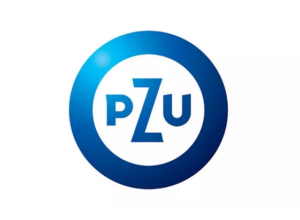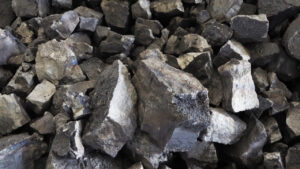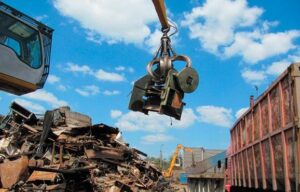
Insurance premiums accrued under international Green Card insurance contracts concluded by member companies of the Motor (Transport) Insurance Bureau of Ukraine (MTIBU) in January-October 2025decreased by 3.74% compared to the same period in 2024, to UAH 4.620 billion. According to the MTIBU website, the number of Green Card contracts concluded during this period decreased by 4.52%, to 1.204 million.
At the same time, the amount of compensation paid on claims increased by 2.07% to EUR 42.629 million, while the number of claims paid decreased by 7.03% to 12.3 thousand.
The MTIBU is the only association of insurers providing compulsory civil liability insurance for owners of land vehicles for damage caused to third parties.
The Green Card is a system of insurance protection for victims of road traffic accidents, regardless of their country of residence and the country of registration of the vehicle. It is valid in 45 countries in Europe, Asia, and Africa.
According to the decision adopted by the General Assembly of the Council of the International Motor Insurance Bureau “Green Card” in Luxembourg in May 2004, Ukraine has been a full member of this system since January 1, 2005.

PZU Ukraine Life Insurance paid out UAH 47.1 million to customers in January-September 2025, which is UAH 4.8 million more than in the same period of 2024, according to information from the insurer. It is noted that payments of the accumulated amount in connection with the expiration of insurance contracts accounted for 47% of the total amount of payments.
Payments for other insured events amounted to UAH 24.8 million. They were mainly made in cases of injury, critical illness, various disability groups of the company’s clients, as well as in cases of death of insured persons during the term of the insurance contract. Almost 11% of the total amount of insurance payments were related to traumatic injuries of insured persons.
According to the information, the company settled 1,519 cases during the reporting period.
As reported, in January-September 2025, PZU Ukraine Life Insurance Company collected UAH 181.298 million in net premiums, which is 30% less than in the same period a year earlier.
The financial result before taxation amounted to UAH 110.326 million, which is 27.8% less than in January-September a year ago, financial expenses – UAH 134.989 million (+20.3%).
The company also reported that in the first nine months of 2025, it reduced its net profit by 20.6% compared to the same period last year, to UAH 89.977 million.
PZU Ukraine Life Insurance PJSC has been operating since 2003. It is part of the PZU Group, one of the oldest and largest in Poland in terms of gross premiums written (according to data from the Polish Financial Supervision Authority).

In January-October of this year, Ukraine increased its ferroalloy exports by 31.9% in physical terms compared to the same period last year, to 87,379 tons.
According to statistics released by the State Customs Service (SCS) on Wednesday, in monetary terms, ferroalloy exports increased by 25.5% to $98.064 million.
The main exports were to Poland (27.09% of shipments in monetary terms), Algeria (23.09%), and Turkey (21.52%).
In addition, Ukraine imported 32,255 thousand tons of this product in the first 10 months of 2025, a decrease of 58.4% compared to the same period in 2024. In monetary terms, imports fell by 53.5% to $61.045 million. Imports were mainly from Norway (19.49%), Kazakhstan (16.29%), and France (9.87%).
As reported, the Pokrovsky Mining and Processing Plant (PGZK, formerly Ordzhonikidze Mining and Processing Plant) and the Marganetsky Mining and Processing Plant (MGZK, both in Dnipropetrovsk region), which are part of the Privat Group, stopped mining and processing raw manganese ore in late October-early November 2023, while NZF and ZZF stopped smelting ferroalloys. In the summer of 2024, ferroalloy plants resumed production at a minimum level.
PGZK and MGZK did not produce any products in 2024, while in 2023, PGZK produced 160.31 thousand tons of manganese concentrate, and MGZK was idle.
In 2024, Ukraine reduced its exports of ferroalloys in physical terms by 4.45 times compared to 2023, to 77,316 thousand tons from 344,173 thousand tons. and in monetary terms, it decreased by 3.4 times, to $88.631 million from $297.595 million. At the same time, the main exports were to Poland (27.40% of supplies in monetary terms), Turkey (21.53%), and Italy (19.82%).
In addition, Ukraine imported 82,259 tons of this product last year, compared to 14,203 tons in 2023 (a 5.8-fold increase). In monetary terms, imports increased 3.3 times, from $42.927 million to $140.752 million. Imports were mainly from Poland (32.71%), Norway (19.55%), and Kazakhstan (13.9%).
The business of ZZF, NZF, Stakhanov ZF (located at NKT), Pokrovsky and Marganetsky GZK was organized by PrivatBank prior to the nationalization of the financial institution. The Nikopol Ferroalloy Plant is controlled by the EastOne group, created in the fall of 2007 as a result of the restructuring of the Interpipe group, as well as the Privat group.

In January-October 2025, Ukrainian companies increased exports of ferrous metal scrap by 52.1% compared to the same period last year — to 345,197 tons from 226,970 tons.
According to statistics released by the State Customs Service (SCS) on Wednesday, 33,357 tons were exported in October, 28,785 tons in September, 34,713 tons in August, 44,842 thousand tons in July, a record 47,691 thousand tons in June, 28.6 thousand tons in May, 46,321 thousand tons in April, 39,908 thousand tons in March, in February – 25,284 thousand tons, in January – 15,696 thousand tons of scrap.
In monetary terms, scrap exports in January-October increased by 43.4% – to $103.052 million from $71.862 million.
During this period, scrap exports were formally carried out mainly to Poland (81.08% of shipments in monetary terms), Greece (6.19%), and Italy (5.47%).
In the first 10 months of this year, Ukraine imported 34 tons of scrap worth $13,000 from Poland (53.85%), the Seychelles (30.77%), and the British Virgin Islands (7.69%).
As reported, due to the sharp increase in exports of strategic raw materials from Ukraine, the Ministry of Economy initiated the introduction of a licensing and quota regime for scrap exports with a zero quota. A public discussion of the draft resolution is currently underway. Its implementation is expected to contribute to the smooth operation of Ukraine’s metallurgical and foundry industries, as well as to stabilize the situation with regard to meeting the demand for scrap on the domestic market of Ukraine.
In 2024, Ukraine’s scrap collection companies increased their exports of ferrous metal scrap by 60.7% compared to 2023, from 182,465 thousand tons to 293,190 thousand tons. In monetary terms, scrap exports for the year increased by 73.2% to $91.311 million from $52.723 million.

In January-October of this year, Ukrainian mining companies reduced exports of iron ore raw materials (IORM) in physical terms by 4.41% compared to the same period last year, from 27 million 790.352 thousand tons to 26 million 565.296 thousand tons.
According to statistics released by the State Customs Service (SCS) on Wednesday, foreign currency proceeds from iron ore exports decreased by 14.3% during this period, from $2 billion 341.865 million to $2 billion 7.246 million.
Exports of raw materials were mainly to China (44.49% of shipments in monetary terms), Slovakia (16.97%), and Poland (16.78%).
In addition, in January-October 2025, Ukraine imported mineral resources worth $86,000 in the amount of 118 tons from the Netherlands (51.16%), Italy (33.72%), and Norway (15.12%), while in the same period last year it imported 835 tons worth $261,000.
As reported, in 2024, Ukraine increased its exports of raw materials by 89.8% compared to 2023, to 33 million 699.722 thousand tons, and foreign exchange earnings grew by 58.7%, to $2 billion 803.223 million UAH.
In 2024, Ukraine imported mineral resources worth $414,000 in a total volume of 2,042 tons, while in 2023, 250 tons of these raw materials were imported worth $135,000. In 2023, exports of raw materials decreased by 26% in real terms compared to 2022, to 17 million 753,165 thousand tons. Foreign exchange earnings amounted to $1 billion 766,906 million (a decrease of 39.3%). A total of 250 tons of raw materials were imported for $135,000.